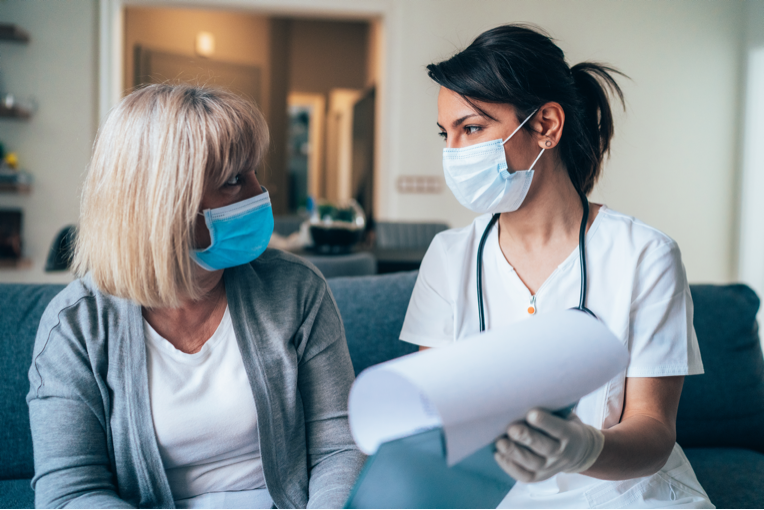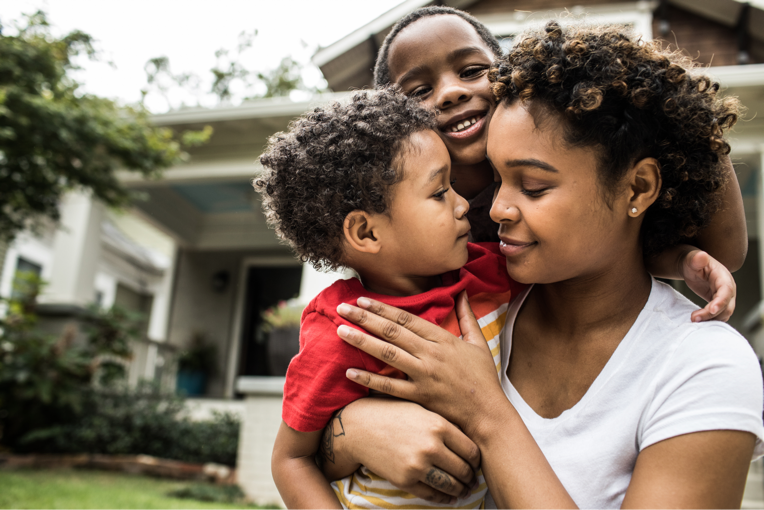Together, we can beat the flu.
It’s been a hard year. We’re all still dealing with how COVID-19 has changed our daily lives.
Now, flu season is approaching. Both COVID-19 and the flu can cause severe upper respiratory infections. And we aren’t sure yet how it could affect someone to have them at the same time.
But let’s not forget how serious the flu can be, all on its own.
For many people, the flu is worse than the common cold. And it can put you — or someone you love — in the hospital. The flu is riskier for:
- Older adults,
- Young children,
- Pregnant women, and
- People with chronic health issues
We do know that people who can’t get a flu shot are more at risk if the people around them aren’t vaccinated.
Here’s some good news: the flu shot is a safe, proven way to reduce the chances you or someone at risk will get sick. In fact, the flu shot prevents millions of illnesses every year.
Flu season starts in early fall, but flu shots are available now. The flu shot can take a couple of weeks to work. And since you could catch it or pass it on before the vaccine starts to protect you, please get your flu shot as soon as you can.
Let’s get ahead of the spread.
Where to get a flu shot
The flu shot is covered under most health plans at no cost to you. It’s available at your doctor’s office, pharmacies, and most local health departments, while supplies last.
Find a provider near you

Key facts about the flu shot
COVID-19 makes the flu shot as important as ever.
It’s possible to get the flu (or other respiratory illnesses) and COVID-19 at the same time. Experts aren’t sure yet what it would be like to have both at once. That’s another reason it’s important to get a flu shot as soon as possible.
Almost everyone 6 months and older should get a flu shot.
There are rare exceptions, so talk to your provider if you have any concerns about allergies or health issues. There are alternatives for people with egg allergies.
The flu shot is safe and prepares your body to fight off illness.
The flu shot is a proven way to lower the chances you’ll get sick – or give the flu to someone at risk. You can experience a mild reaction or symptoms like a fever or headache from the flu shot. Those are actually signs your immune system is responding well.
Your neighbors need healthy people to get the flu shot, too.
Getting your flu shot is the best way you can reduce your risk of catching the flu and spreading it to others who are at risk.
The flu shot won’t give you the flu.
It takes a couple of weeks for the flu shot to protect you. So you could catch the virus before getting your shot and get sick before it starts working. The flu shot may not always prevent the flu, but it can still reduce the severity of the illness.
Last year’s shot won’t protect you.
Studies have shown a flu shot can reduce the likelihood of catching the flu by 40-50%. But the shot’s protection declines over time and virus strains can change each year, so it’s important not to skip a year. And remember, the shot can take a couple of weeks to start protecting you.
Flu shots are widely available, often at no cost to you.
The flu shot is covered under most health plans at no cost to you. It’s available at your doctor’s office, pharmacies, and most local health departments, while supplies last.
Find a provider near you

WellTuned offers quick tips for taking care of yourself this flu season.
- 7 facts about the flu shot
- What to do when you have the flu
- Flu and antibiotics: 3 things you need to know
- 7 Flu facts: prevention, treatment & nutrition
- How getting a flu shot can benefit your heart
Get more from the experts about the flu vaccine and what you can do to protect yourself.
CDC: Influenza Overview or Key Facts About Influenza (Flu)
NIH: Influenza Guide
This message brought to you by 
Follow BCBST on social for the latest flu and COVID‑19 updates.






